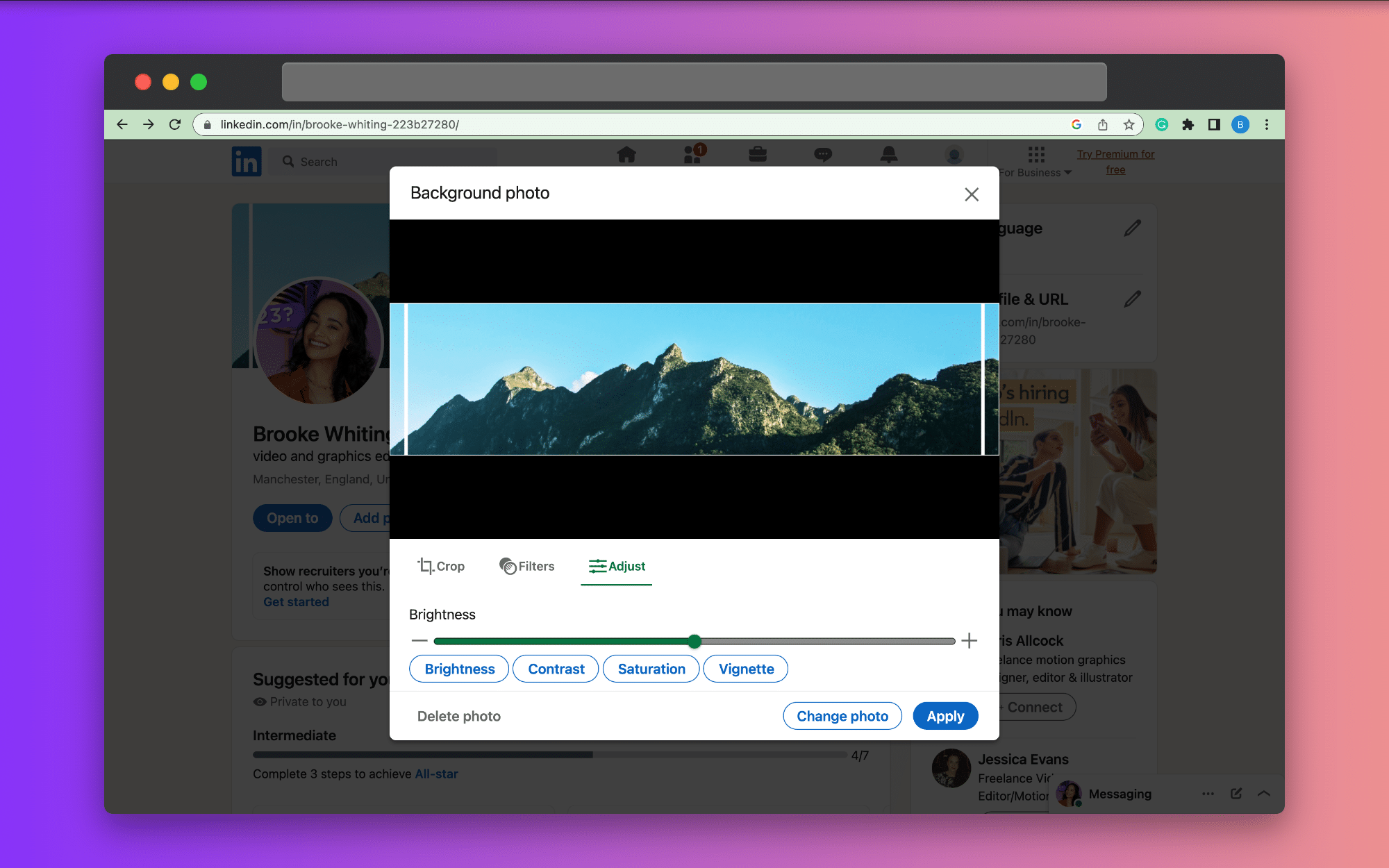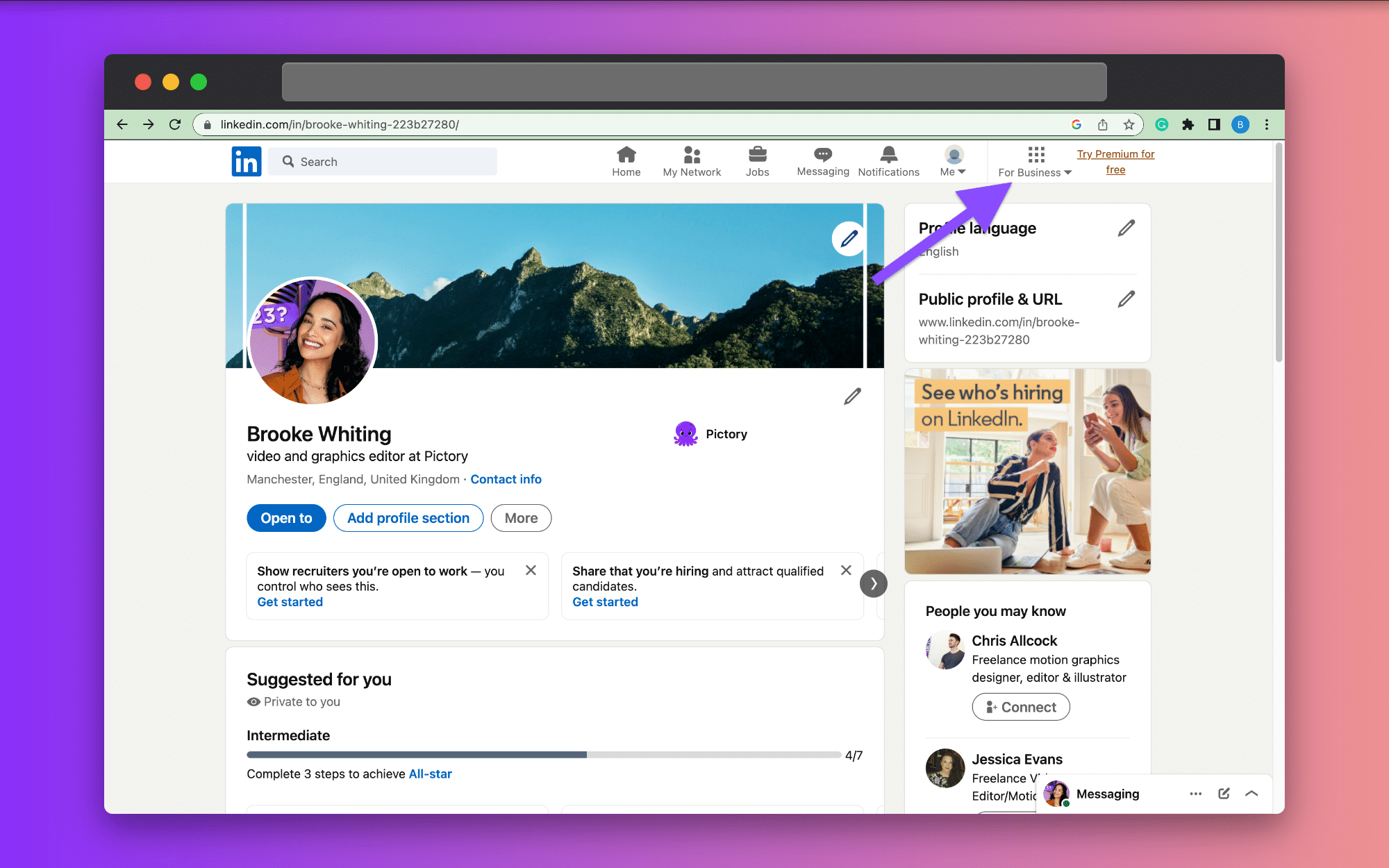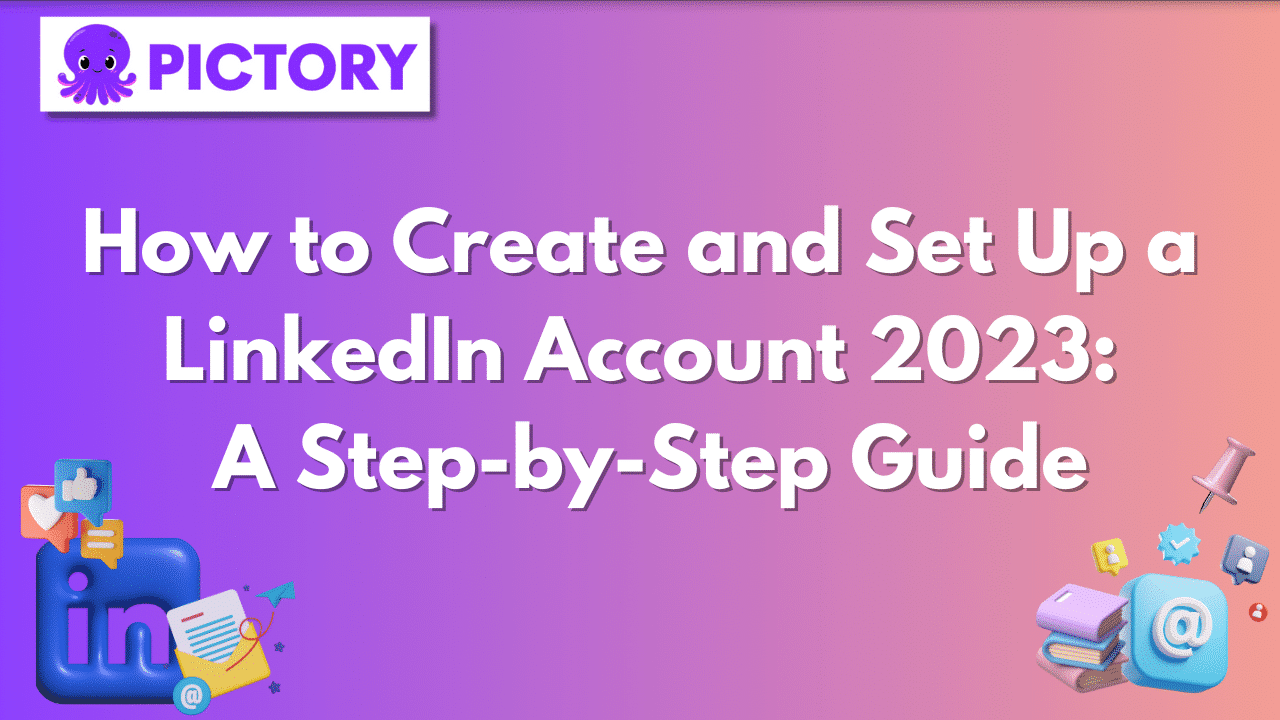Are you ready to take your professional networking to the next level?
With over 930 million users worldwide, LinkedIn has become the go-to platform for professionals looking to expand their network, find new job opportunities, and showcase their skills.
In this comprehensive guide, we’ll delve into the ins and outs of how to create and set up a LinkedIn account in 2023, ensuring that your profile stands out among the competition.
Let’s embark on this journey to enhance your online presence and unlock countless career opportunities!
Short Summary
-
-
Register, enter personal information, and customize your LinkedIn profile for a lasting impression.
-
-
-
Utilize relevant keywords to optimize search engine visibility and increase network connections.
-
-
-
Build relationships by engaging with content & users, requesting recommendations/endorsements, & sharing industry updates.
-
Creating and Setting Up a LinkedIn Account in 2023

Creating and setting up a LinkedIn account involves registering, entering personal information, customizing your profile, and building your network.
Whether you’re joining LinkedIn to strengthen your personal brand, connect with other professionals, or explore new business opportunities, a complete and well-crafted profile is key to making a lasting impression on potential connections and employers.
To create a LinkedIn account, follow these simple steps and start building your professional presence online.

As an active user on the platform, you’ll have access to an array of features designed to help you generate leads, engage with content, and stay updated on industry trends.
By following our LinkedIn profile tips and taking advantage of LinkedIn’s powerful tools, you’ll be well on your way to creating a LinkedIn profile in 2023 that showcases your unique skills and expertise, attracts meaningful connections, and ranks high in search results.
Registering on LinkedIn: Web Browser vs Mobile App

When it comes to registering on LinkedIn, LinkedIn users have two convenient options: using a web browser or downloading the mobile app.
Both options offer a seamless, user-friendly experience, but each comes with its own set of advantages.
Registering via a web browser allows you to access the full range of platform features and easily switch between different accounts.
On the other hand, the mobile app makes it simple to update your profile on the go and stay connected with your network, no matter where you are.
To register on either platform, simply provide your name, email address, and create a unique password.
The choice between a web browser and a mobile app ultimately depends on your preferences and how you plan to use LinkedIn.
Though of course, it’s possible to have both and link them together.
Entering Personal Information

As you create your LinkedIn account, it’s crucial to enter accurate and up-to-date personal information.

This includes your name, email address, location, and professional experience.

By ensuring that your profile reflects your true qualifications and achievements, you’ll build credibility among potential connections and employers.
Additionally, maintaining an up-to-date location on your profile can improve your chances of being discovered by recruiters and other professionals in your area.
As your career progresses, remember to update your LinkedIn profile to reflect any changes in your roles, skills, and accomplishments.
This commitment to keeping your profile current will demonstrate your dedication to growth and continuous improvement in your field.
Crafting a Unique Password

When creating your LinkedIn account, it’s essential to craft a unique and strong password to ensure the security of your profile.
A secure password should be at least 12 characters in length and include a combination of upper and lowercase letters, numbers, and symbols.
Avoid using personal information or commonly used words to reduce the risk of unauthorized access to your account.
In case you find it challenging to remember a complex password, consider creating a passphrase instead of a single word.
Passphrases are typically longer and easier to recall, providing an added layer of security for your account.
Utilizing a password manager to store your passwords securely can also be a good practice to ensure the safety of your online accounts, including LinkedIn.
Customizing Your LinkedIn Profile

To make your LinkedIn profile stand out, it’s essential to customize various elements, such as your profile picture, background photo, headline, and summary.
Each of these components plays a crucial role in showcasing your personality, expertise, and professional brand.
A well-crafted headline and summary can help attract potential connections and employers, while an eye-catching background photo adds visual appeal to your profile.
Your profile picture, arguably one of the most critical elements of your LinkedIn profile, should be a professional-looking headshot that creates a strong first impression.
By customizing these elements thoughtfully, you’ll create a LinkedIn profile that truly reflects your unique skills and experience.
Selecting the Perfect Profile Picture

Your LinkedIn profile picture plays a significant role in creating a strong first impression and increasing your profile visibility.
A perfect profile picture should feature clean and soft lighting, a close-up of your face, a pleasant facial expression, and be in color with good proportions.
To optimize your profile picture for search engines, consider naming your profile picture with relevant keywords.
This simple step can help improve your search rankings and attract your target audience.
Remember, a professional and approachable profile picture can make all the difference in attracting new connections and opportunities on LinkedIn.
Designing an Eye-Catching Background Photo

An eye-catching background photo not only adds visual appeal to your LinkedIn profile, but also serves as an opportunity to showcase your personality or professional interests.
A suitable background photo should be clear, high-resolution, aesthetically pleasing, and reflective of your professional brand.
Consider using a photo of your workspace, a cityscape, or an image that represents your hobbies or extracurricular activities.
Ensure that the photo is elongated and not overly distracting, as it should complement your profile rather than detract from it.
By designing an engaging background photo, you’ll create a more memorable LinkedIn profile that captures the interest of potential connections and employers.
Writing a Compelling Headline and Summary
A captivating headline and summary are essential for drawing in potential contacts and employers on LinkedIn.
Your headline should emphasize your current role and unique skills, while your summary should provide a brief overview of your professional experience, accomplishments, and goals.
When crafting your headline and summary, keep your target audience in mind and use language that resonates with them.
Avoid using buzzwords that lack depth and focus on showcasing the unique qualities that set you apart from other professionals in your industry.
By writing a compelling headline and crafting an engaging LinkedIn summary, you’ll create a LinkedIn profile that leaves a lasting impression on potential connections and employers.
Optimizing Your LinkedIn Profile for Search Engines
Optimizing your LinkedIn profile for search engines is crucial for increasing visibility and expanding your network.
By incorporating relevant keywords into your profile, you’ll improve your chances of appearing in search results and attracting your target audience.
In addition to utilizing relevant keywords, consider customizing your LinkedIn URL and engaging with content and users on the platform.
These simple yet effective strategies can help improve your profile’s search engine rankings and increase your chances of connecting with like-minded professionals and potential employers.
Utilizing Relevant Keywords

Incorporating relevant keywords into your LinkedIn profile is essential for attracting your target audience and improving your search rankings.
To effectively utilize relevant keywords, consider including applicable job titles, locations, skills, certifications, and industry-specific terms in your profile.
Avoid relying solely on buzzwords, as they lack depth and fail to provide meaningful information about your accomplishments and professional network.
Instead, focus on incorporating keywords that accurately represent your skills and expertise.
By effectively utilizing relevant keywords in your LinkedIn profile, you’ll increase your chances of appearing in search results and attracting meaningful connections.
Customizing Your LinkedIn URL

Customizing your LinkedIn URL not only makes your profile look more professional but also makes it easier to share.

To customize your URL, navigate to your public profile settings page and enter your desired new username.
Consider using your full first and last name or adding a middle initial or the industry you work in if your desired username is unavailable.
Keep in mind that a personalized URL can help increase your profile’s visibility and make it easier for potential connections and employers to find you on LinkedIn.
Building Your Network on LinkedIn
Building your network on LinkedIn is essential for expanding your professional reach and connecting with like-minded individuals.
Establishing connections, interacting with content, and participating in events are all viable options for building your network on the platform.
When connecting with professionals on LinkedIn, consider sending personalized connection requests that provide a snapshot of your profile highlights and a personalized message about why the connection matters to you.
By engaging with content and users on LinkedIn, you’ll not only expand your network but also showcase your expertise and stay updated on industry trends.
Sending Personalized Connection Requests
Sending personalized connection requests on LinkedIn is a crucial aspect of building meaningful relationships with other professionals.
Customizing messages when connecting with professionals on LinkedIn is essential to maximize the likelihood of acceptance and facilitate the development of meaningful relationships.
To send a personalized connection request, consider including a brief introduction about yourself, your reason for reaching out, and any mutual connections or shared experiences you may have with the recipient.
By taking the time to craft a thoughtful, personalized message, you’ll increase your chances of forging strong connections and expanding your professional network.
Engaging with Content and Users

Engaging with content and users on LinkedIn is key to staying active on the platform and showcasing your expertise.
By consistently posting relevant content, commenting on posts from your network, and sharing updates, you’ll demonstrate your commitment to staying informed and connected within your industry.
Participating in LinkedIn groups and attending industry events can also help you connect with professionals who share similar interests and expand your network.
As you engage with content and users on LinkedIn, you’ll not only increase your profile visibility but also attract potential connections and employers who value your insights and contributions.
Creating a LinkedIn Business Account

A LinkedIn business account allows companies to showcase their services, interact with potential customers, and build brand awareness.
Creating a Linked Network.

In a business account, setting up a company page, customizing the page with company details, and building your page to accurately represent your business.
By creating a LinkedIn business account, you’ll be able to leverage the platform’s powerful tools for marketing, recruiting, and networking.
This can help you attract new customers, connect with industry influencers, and stay updated on the latest trends and opportunities in your sector.
Selecting the Appropriate Page Type
When setting up your LinkedIn business account, it’s important to select the appropriate page type to accurately represent your company.
The available page types depend on the size and requirements of your business, and each comes with its own set of features and benefits.
For small companies, you may opt for one of the first two page-type options, depending on the size of your business and your specific needs.
By selecting the appropriate page type, you’ll ensure that your LinkedIn business account accurately represents your company and caters to your unique marketing and networking objectives.
Providing Company Details and Building Your Page
To create a professional online presence for your business on LinkedIn, it’s essential to provide accurate company details and build your LinkedIn company page.
This includes adding your company’s name, logo, industry, location, and website, as well as crafting a compelling company description and showcasing your products or services.
Once you’ve filled out the necessary details, click “Create Page” to complete the process.
By providing accurate company details and building a visually appealing and informative LinkedIn company page, you’ll create a strong online presence that attracts potential customers, partners, and employees to your LinkedIn page, including an engaging profile page.
Maintaining and Updating Your LinkedIn Account
Regularly maintaining and updating your LinkedIn account, both for individuals and businesses, is crucial for showcasing consistency and growth to potential employers and connections.
This includes updating your profile information, sharing relevant content, and engaging with users in your network.
Consistently posting new content and updates not only helps maintain a dynamic profile but also attracts the attention of viewers.
By staying active and committed to updating your LinkedIn account, you’ll demonstrate your dedication to growth and continuous improvement in your field, attracting meaningful connections and opportunities.
Sharing Relevant Content and Updates
Sharing relevant content and updates on LinkedIn is beneficial for increasing engagement and attracting potential connections.
This includes posting articles, videos, and images related to your industry, as well as sharing company news, accomplishments, and insights.
By consistently sharing content that resonates with your target audience, you’ll establish yourself as a thought leader in your field and attract like-minded professionals who value your expertise and insights.
As you engage with and share content on LinkedIn, you’ll not only expand your network but also create a strong online presence that showcases your industry knowledge and skills.
Requesting Recommendations and Endorsements
Requesting recommendations and endorsements from close contacts can add credibility to your LinkedIn profile and highlight your skills.
These personalized testimonials from colleagues or associates regarding shared experiences, projects, or skills acquired can significantly enhance your profile’s appeal to potential employers and connections.
To request a recommendation or endorsement, reach out to contacts who are familiar with your skills or work and ask them to provide a testimonial.
By actively seeking feedback from those who know your capabilities best, you’ll build a stronger, more credible LinkedIn profile that showcases your unique strengths and expertise.
Summary
In conclusion, creating and setting up a LinkedIn account in 2023 involves several crucial steps, including registering, entering personal information, customizing your profile, and actively engaging with content and users.
By following our comprehensive guide and tips, you’ll be able to create a standout LinkedIn profile that accurately reflects your skills, expertise, and professional brand.
With a well-crafted and optimized LinkedIn profile, you’ll unlock countless career opportunities, expand your network, and stay ahead in the ever-evolving professional landscape.
Frequently Asked Questions
How do I create a LinkedIn account for beginners?
Getting started with LinkedIn is easy! Simply head to the LinkedIn website, enter your details, and click Join Now. Make sure you use your correct name and a professional email address.
You will then be guided through the steps of setting up your profile.
Don’t forget to verify your email address.
What are the new LinkedIn features for 2023?
Get Ready for the Latest LinkedIn Features Coming Your Way in 2023!
With new profile customization options, improved search features, and expanded opportunities for businesses to engage with their customers, LinkedIn is set to revolutionize networking in 2023.
How do I create a LinkedIn profile with no experience?
Creating a LinkedIn profile with no experience doesn’t have to be difficult.
Be open about wanting work experience, include activities, showcase your skills and interests, join online communities and pay attention to the details to make an impactful profile.
Highlight your skills and interests, and make sure to include any relevant activities you have done. This could include volunteer work, internships, or even hobbies.
What are the advantages of registering on LinkedIn using a web browser?
The main benefit of registering for LinkedIn using a web browser is having access to its expansive set of features, which allow users to manage their accounts more efficiently.
Additionally, switching between different accounts on the platform can be done easily and quickly.
How can I optimize my LinkedIn profile for search engines?
Making sure your profile is complete, including a professional headshot, summary, list of skills and experience, can help ensure that you show up more prominently in search engine results.
Optimizing your LinkedIn profile for search engines involves incorporating relevant keywords into your profile, customizing your LinkedIn URL, and ensuring your profile is complete with a professional headshot, summary, list of skills, and experience.
Doing so will help ensure that your profile appears prominently in search engine results.
Enjoyed this article? Why not check out The Best Guide To Set Up Social Media Channels 2023





